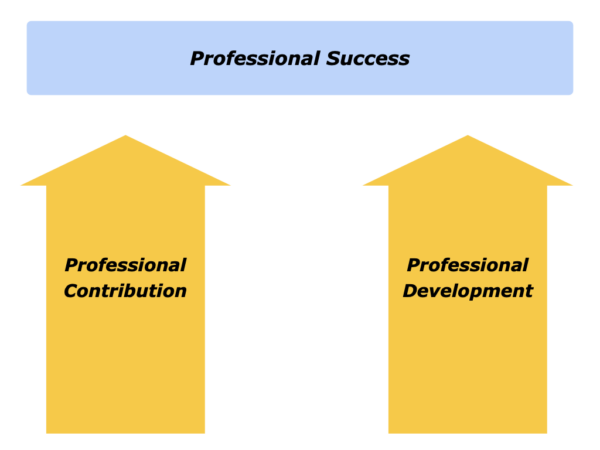
This is an approach that can help people to continue to grow in professional careers. It is particularly useful when a person’s daily work is not necessarily helping them to develop.
The approach involves helping a person explore their long-term professional picture of success. These are the specific things they want to do or achieve in their professional life. Bearing this in mind, it involves focusing on:
The professional contribution they want to make to their present employer;
The professional development steps they want to take towards achieving their career goals.
The ideal would be for these themes to be intertwined, but this is not always possible. Sometimes they may need to be pursued in parallel on the way towards achieving the person’s picture of success.
Let’s look at how this works in practice. Imagine that you lead a team of motivated people. It will be important to encourage each of them:
To focus on the contribution they want to make towards delivering the team’s goals;
To focus on their own professional development goals.
The following approach seems like a long process, but it works. It involves going through the following steps with a person in a professional way.
Imagine that you are meeting a person who says they joined the organisation because it promised lots of development opportunities.
Because of certain events, however, the organisation is at a stage where it has become primarily focused on its financial targets.
This may be understandable, but some employees may feel they are simply doing the day job. How to manage this kind of situation?
One approach is to go through the following steps. As mentioned earlier, however, it is important to do this in a professional way.
You can explain that the organisation is at a stage
in its life where it is focusing on specific targets
Each of us may have different opinions about the organisation’s possible ways forward, but this is the reality of the situation. The organisation has made its decision and is working towards certain goals.
You can explain that each of us can decide whether
we want to contribute towards achieving these goals
You may wish to give some context about the modern world of work. This involves giving the big picture and, in some ways, explaining the facts of life. These include the following.
The world of work has changed. We are all self-employed now. We can aim to build on our strengths, do satisfying work and deliver success to our customers and employers.
There are few fixed jobs anymore, but there are many projects. Because things can change quickly, we are all on rolling contracts. It is important to give our best to a customer or employer, but also to focus on how to shape our future.
Bearing this in mind, we each make choices. We can choose to join an organisation, go freelance, run our own business or take other routes. Each route has pluses and minuses.
When we choose to join an organisation, there are many pluses. These include getting a regular wage, some satisfying work and other benefits. There may also be certain minuses. The other options are to join another organisation, be self-employed or run our own business. These also have pluses and minuses.
We can each make our own decisions about whether or not we want to contribute towards achieving the organisation’s goals.
Every organisation has a Scorecard – the mandatory things that must be delivered. We can make our best contribution to delivering our part of these things. If possible, we can also aim to do stimulating projects.
Imagine that you have given the big picture a person in a professional way. You can then explain that you will, as far as possible, help them:
To build on their strengths and make their best contribution towards achieving the team’s goals;
To have separate sessions with them to focus on their professional development goals.
You can explain that the second type of session will be confidential. It will be about the person and their aims. The information you get will not be used in any performance appraisal session. The aim will be to help the person to develop and work towards their professional picture of success.
You will have your own way of explaining the big picture. It can then be time to move on to the next stage.
You can clarify the person’s professional
contribution towards achieving the team’s goals
Imagine that everybody is clear on the team’s goals. You can then agree on the outcomes that each person will deliver towards achieving these aims.
The following pages offer material that you can send to the person before meeting to clarify their best contribution. You can then meet with them to agree on the specific things they will deliver towards achieving the team’s goals.
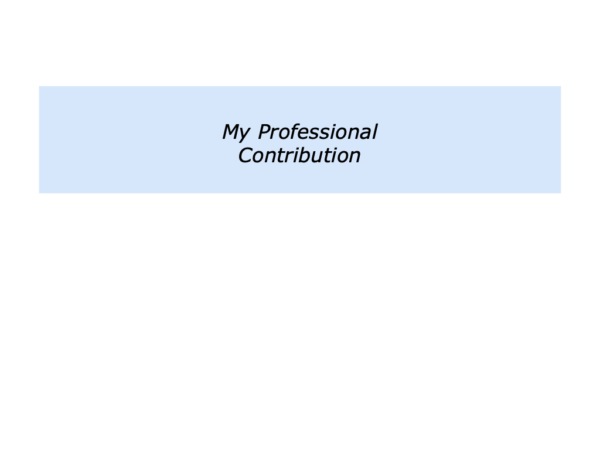
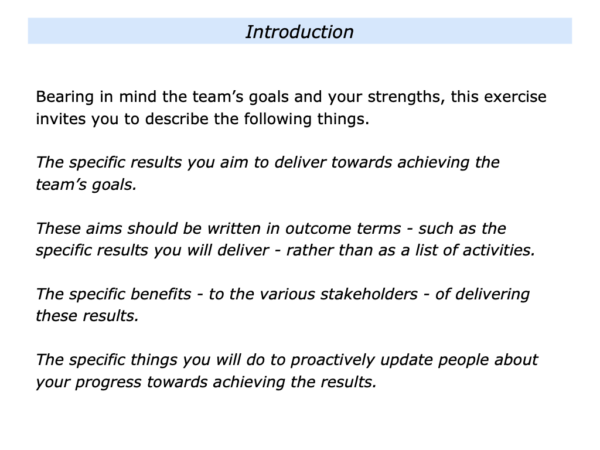
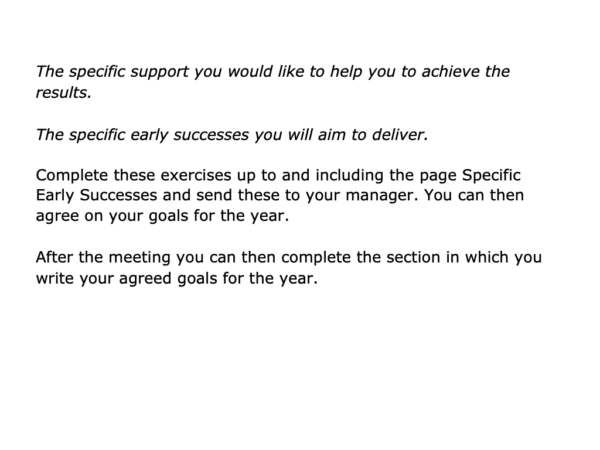
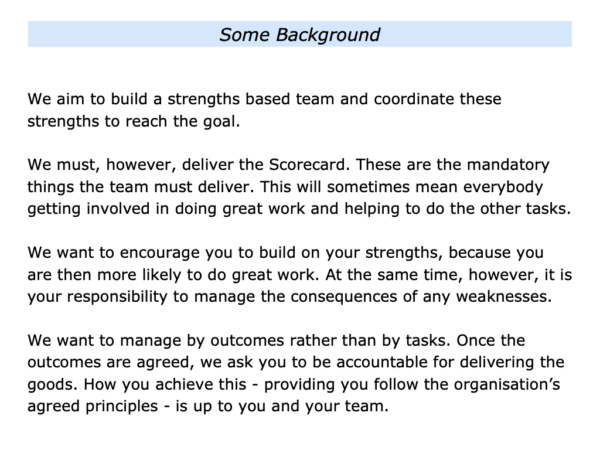
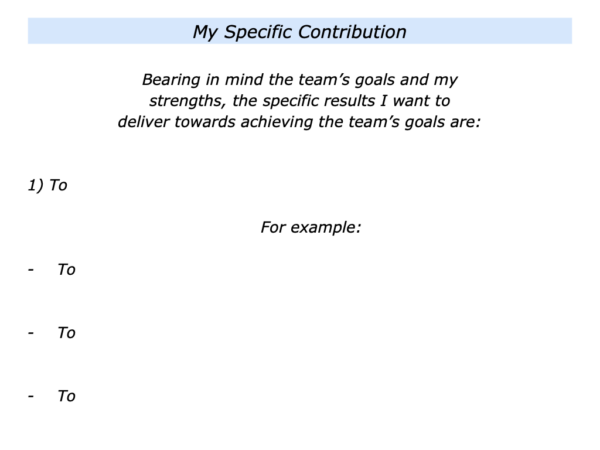
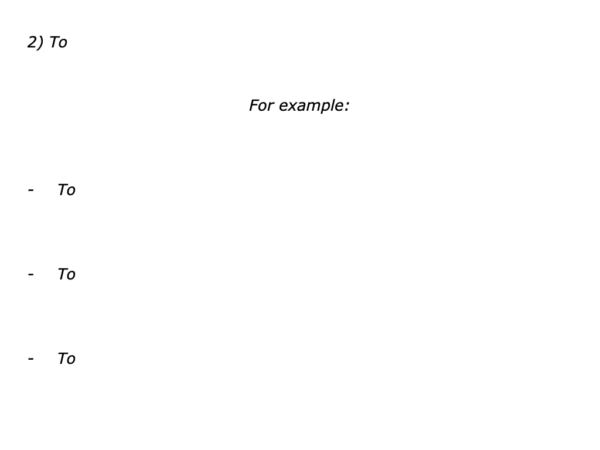
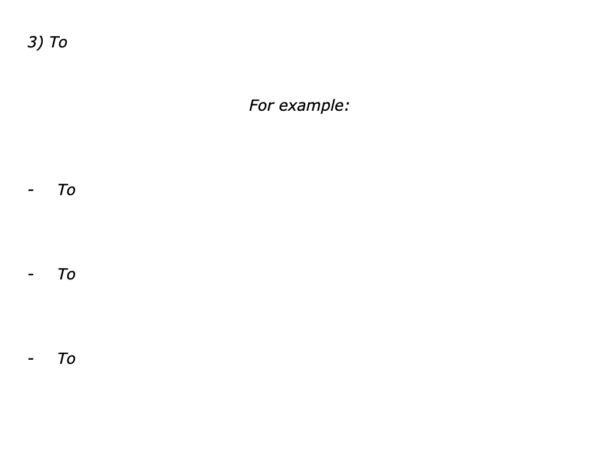
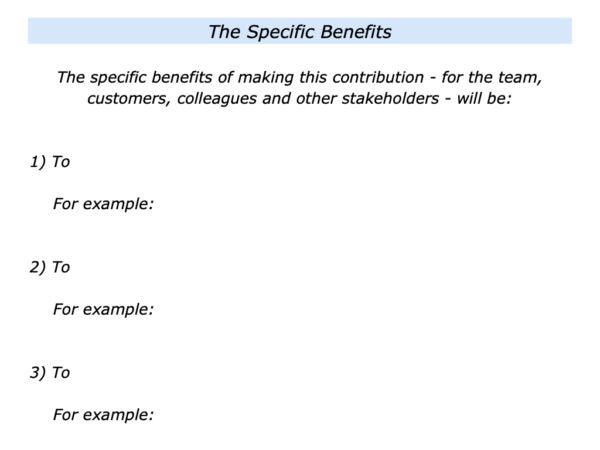
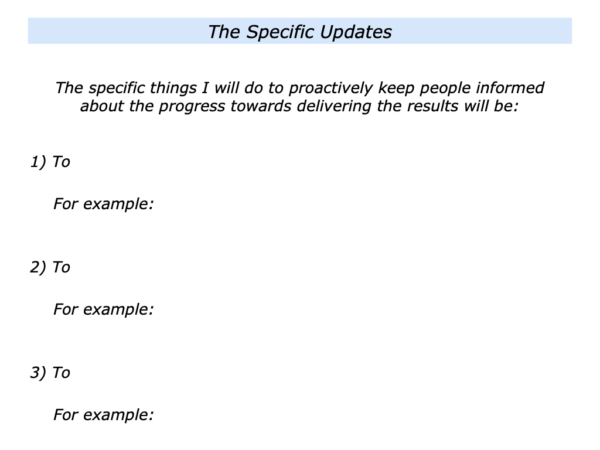
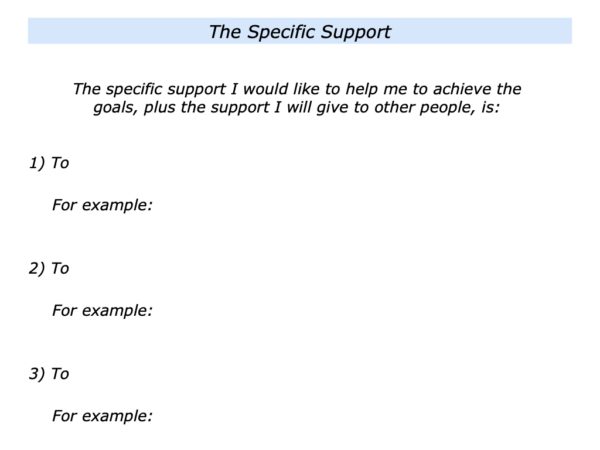
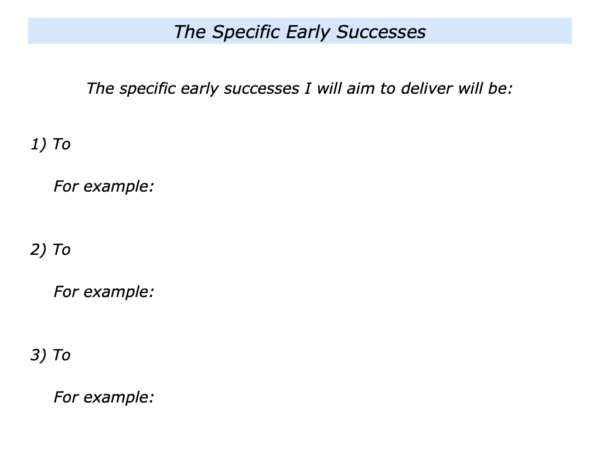
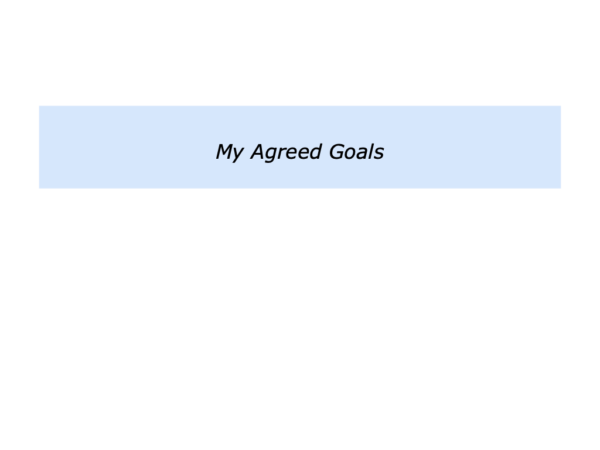
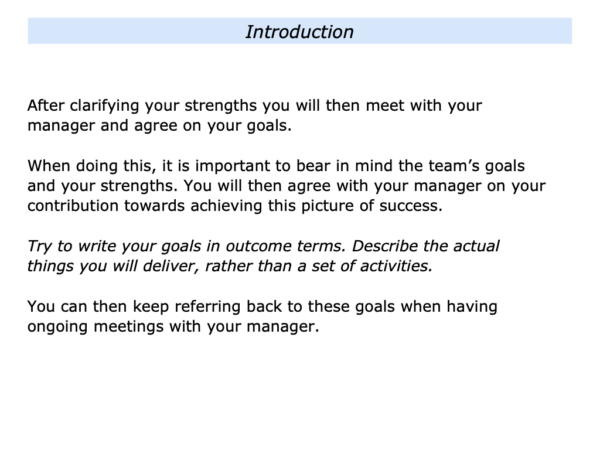
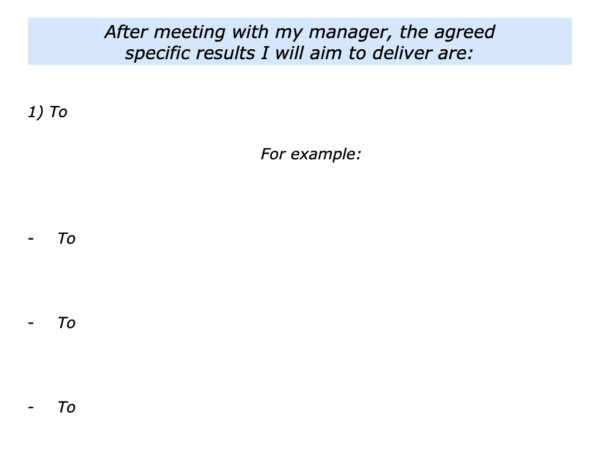
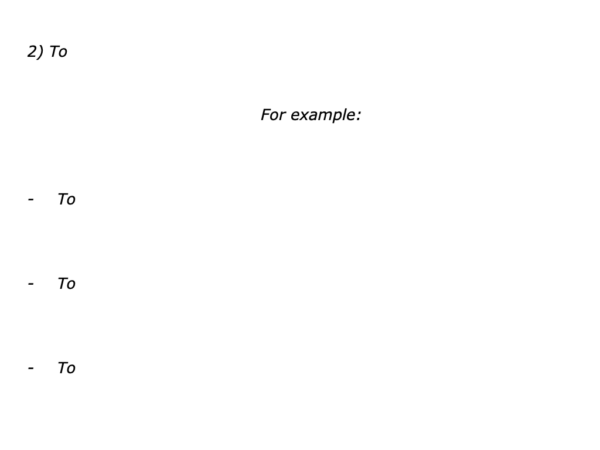
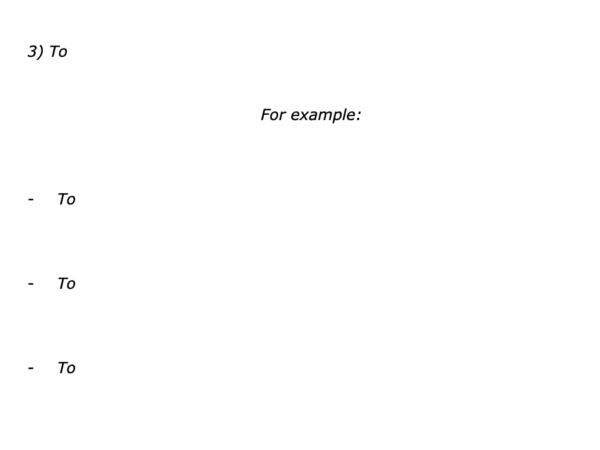
Imagine that the person has made clear contracts about the results they will deliver. You can continue to meet with them to ensure they make their best contribution towards achieving the team’s goals. It can then be useful to move on to the next stage.
You can help the person to develop and work
toward achieving their professional goals
There are many models for helping a person to shape their career. This approach involves helping a person:
To clarify the specific things they want to do and achieve in their professional career;
To clarify the specific things they want to do build on the strengths and develop in other ways to work towards their professional goals;
To clarify the specific things they see as their responsibility when working towards their professional goals;
To clarify the specific kinds of support and help they would like – if possible – when working toward their professional goals;
To clarify their specific development plan for working towards their professional goals;
To clarify the specific benefits – for themselves and for other people – of working towards their professional goals.
Imagine that you would like to offer this kind of session to a person. It will be important to underline that: a) the session is about their professional development – it is not an appraisal session; b) the topics you discuss will be confidential.
Bearing these things in mind, you will then do your best to help the person to work towards their professional goals. Here is the material you may want to send to the person before the session. You can then work through these with the person in your own way.
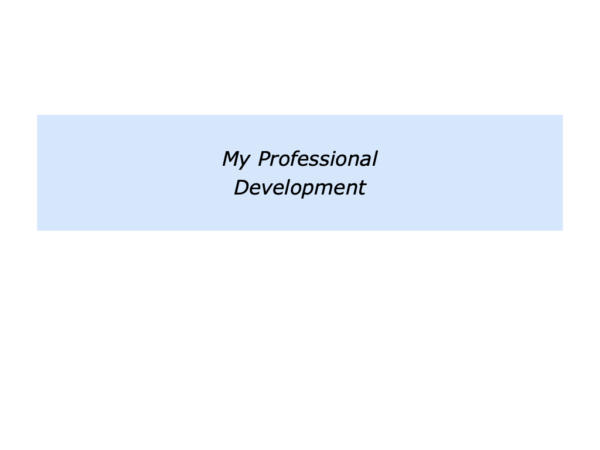
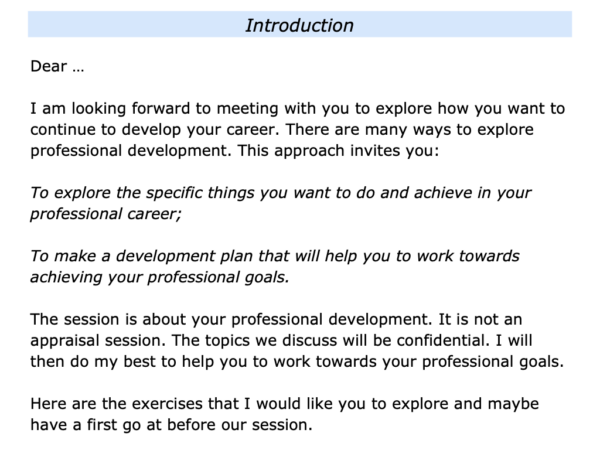
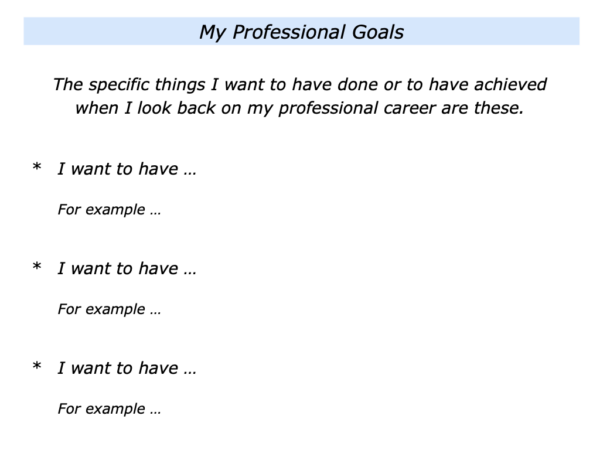
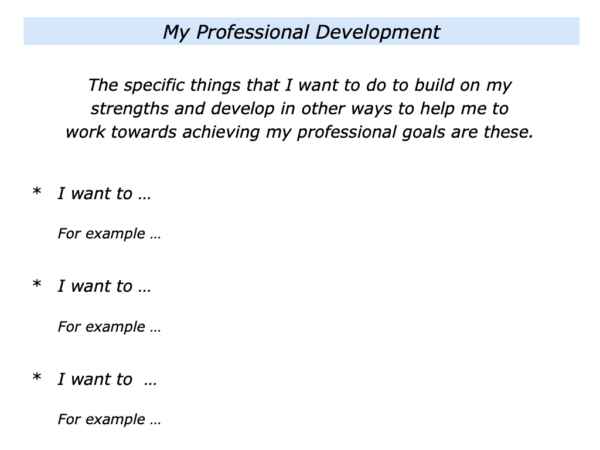
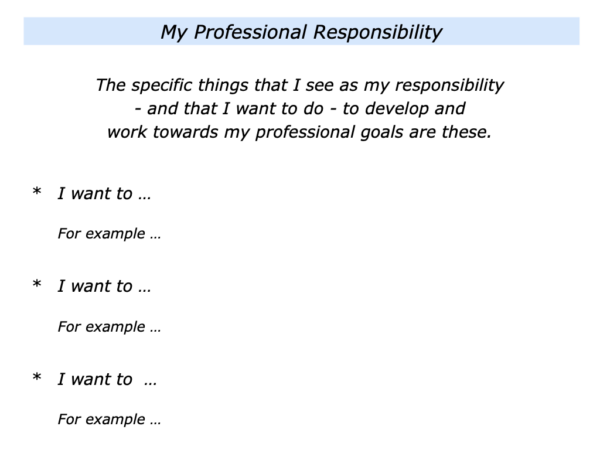
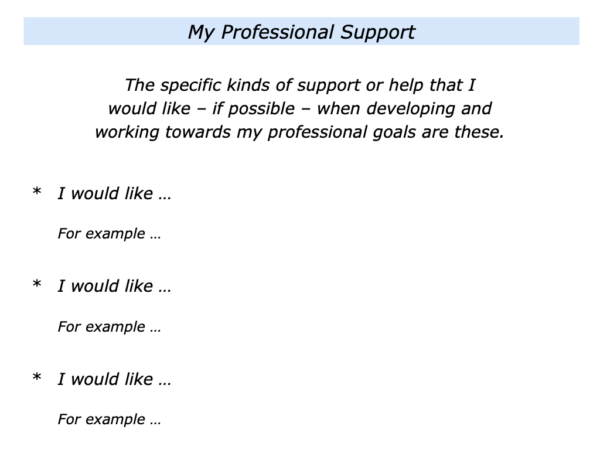
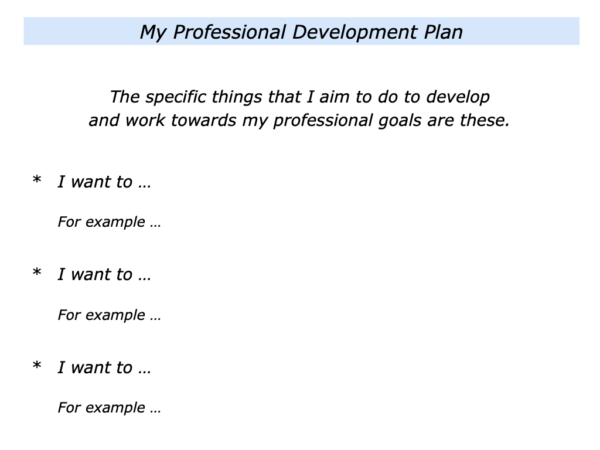
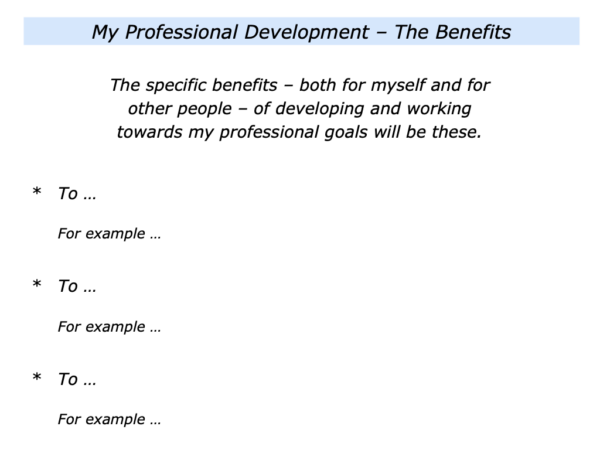
Professional
Development Programmes
Many organisations offer their people programmes on the themes of personal and professional development. These often depend on: a) the motivation of the participants; b) the quality of the people running the programme.
As mentioned earlier in the book, great educators make the learning personal, practical and – in its widest sense – profitable. They provide practical tools that enable people to achieve success.
Good leaders often want to help their people develop and to continue to make their best contributions to the organisation.
The following pages outline one approach to offering such programmes. This is a strengths based approach which helps both the individuals and organisations to achieve success.
The approach aims to deliver positive results. When appropriate, it can also act as a Trojan Horse for exploring many different themes that will help the person and organisation to achieve success.
Here is the introduction. You will, of course, have your own approach to providing such development programmes.
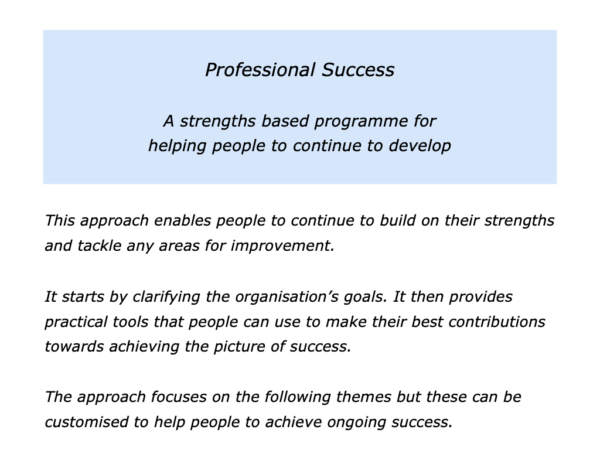
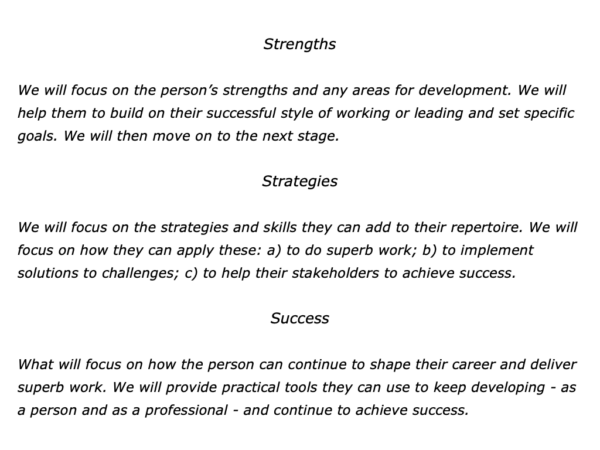
There are many ways to help people to develop. One approach is to try to weave together the person’s professional contribution and their professional development plan.
Sometimes this may work. There may be other times, however, when the demands of delivering the daily work leave less time for professional development.
One model is to follow the parallel approach. It is to help a person to focus on both their professional contribution and their professional development.
This approach can bring benefits to both the person and organisation. The person delivers their agreed contribution and also keeps working towards their professional picture of success.
If you wish, try tackling the exercise on this theme. This invites you to describe how you may wish to follow elements of this approach in your own way. It invites you to complete the following sentences.
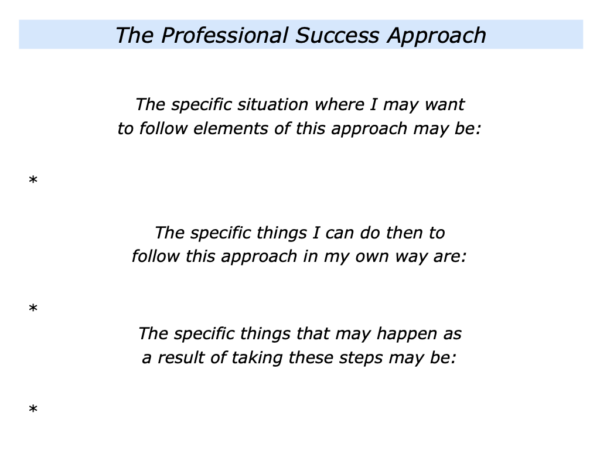






Leave a Reply